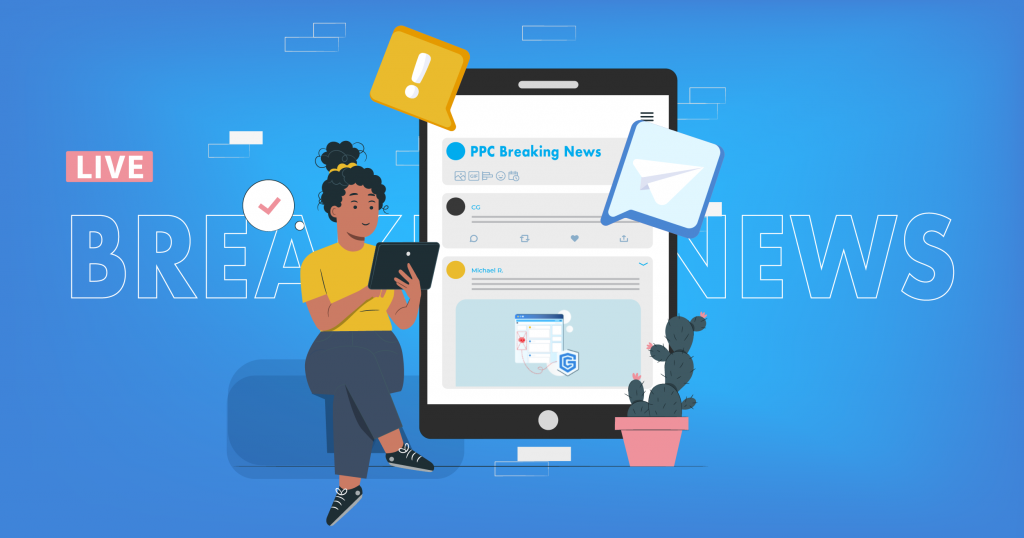Let’s face it: the new iOS update was a pretty polarizing one. On the one hand, TikTok users spent hours teaching others how to customize their home screens due to Apple’s new layout, and on the other hand, many other users didn’t really understand the hype.
Wherever you personally stand on the new iOS update it’s important to note that while it may be aesthetically pleasing, it can in fact affect everyone, including advertisers, in many ways.
What’s New in the iOS Update?
The iOS update gave users a new home screen layout by incorporating fully customizable widgets. This enables users to have everything in one place, without constantly having to scroll between pages.
In addition to new widgets, iOS 14 features Smart Stack, which are intelligently curated widgets based on things like the time of day you open certain apps, as well as the frequency with which apps are used. Furthermore, iOS 14 gave users an App Library, which offers an at-a-glance view of all of the apps on user’s phones, making organization a breeze.
iOS 14 also minimizes call notifications. Instead of taking up the whole screen, incoming calls are presented in a banner-like format that allows you to answer the call as well as multitask. This is a great way to schedule events and make plans in real-time instead of having to switch back and forth between apps.
Another exciting feature deals with the Apple Watch. For users who are part of Apple’s ecosystem, this is a perfect way to streamline productivity as the Apple Watch can be used to unlock your phone. This was Apple’s way of adapting to the coronavirus pandemic, as mask-wearers often had trouble using Face ID to unlock their phones.
Why Is the New iOS Update Problematic for Advertisers?
Although the iOS update has many features Apple users have been wanting for a very long time, some updates are problematic for marketers and advertisers. Apple has made a commitment to app privacy and activity tracking, which means that Apple users now have the choice as to whether their information gets shared with advertisers.
This new update, dubbed the App Tracking Transparency (ATT) policy, gives users the option to allow apps to use their unique Identifier for Advertisers (IDFA) for third-party tracking. Apple is doing this in order to make users aware of what data an app will track, and to give users the ability to opt-in or to opt-out of having their information tracked.
With growing concerns over privacy and how personal information is going to be used, many advertisers and marketers predict that a lot of people will opt-out of this tracking feature, which will disrupt the advertising industry.
Are There Any Solutions for Advertisers after the iOS Update?
Even though Apple’s new update severely limits data collection for advertisers and marketers, platforms like Facebook and Google have implemented ways to circumvent Apple’s privacy options.
Facebook Ads has created “Aggregated Event Management” to minimize any data loss from the iOS update. This feature allows advertisers and marketers to measure ad campaign management that works hand in hand with user’s privacy decisions.
Advertisers can expect to see a limitation on conversions when it comes to Facebook Ads. Only eight conversions per domain is allowed on Facebook Ad campaigns and this update will happen automatically, but it’s important to plan ad campaigns with this in mind.
Another way that Facebook Ads are adapting to the iOS update is through domain verification. Pixels are now being moved to a domain-based ownership system, so verifying your domain becomes important especially if your pixels are managed by multiple parties.
Ad reporting will also no longer be attributed to a 28 day cycle. This also applies to the seven day view-through attribution. Therefore, marketers and advertisers need to keep track of their conversions to see how they will be impacted.
Lastly, due to the lack of ad tracking, it can be difficult to customize ads for custom audiences. In order to account for this, it would be a good idea to broaden your target audience so as to have more information available to you.
Google Ads is also adapting to the iOS 14 update. In order to increase the aggregation of consumer data, Google has decided to switch to another Apple tracking tool called the SKadNetwork, though it is less effective at tracking users.
Google recommends that users upgrade their Google Analytics to the latest version, as it is compatible with the SKadNetwork.
On a mobile network, it’s important for advertisers to monitor campaign performance and adjust their campaigns accordingly.
Conclusion
No matter where you personally stand on the new iOS update, it’s important to see how integral it can be to advertising. Whether you’re an ads manager for a large company or if you’re a small business owner trying to up their advertising game, the new iOS update is perfect for everyone.



